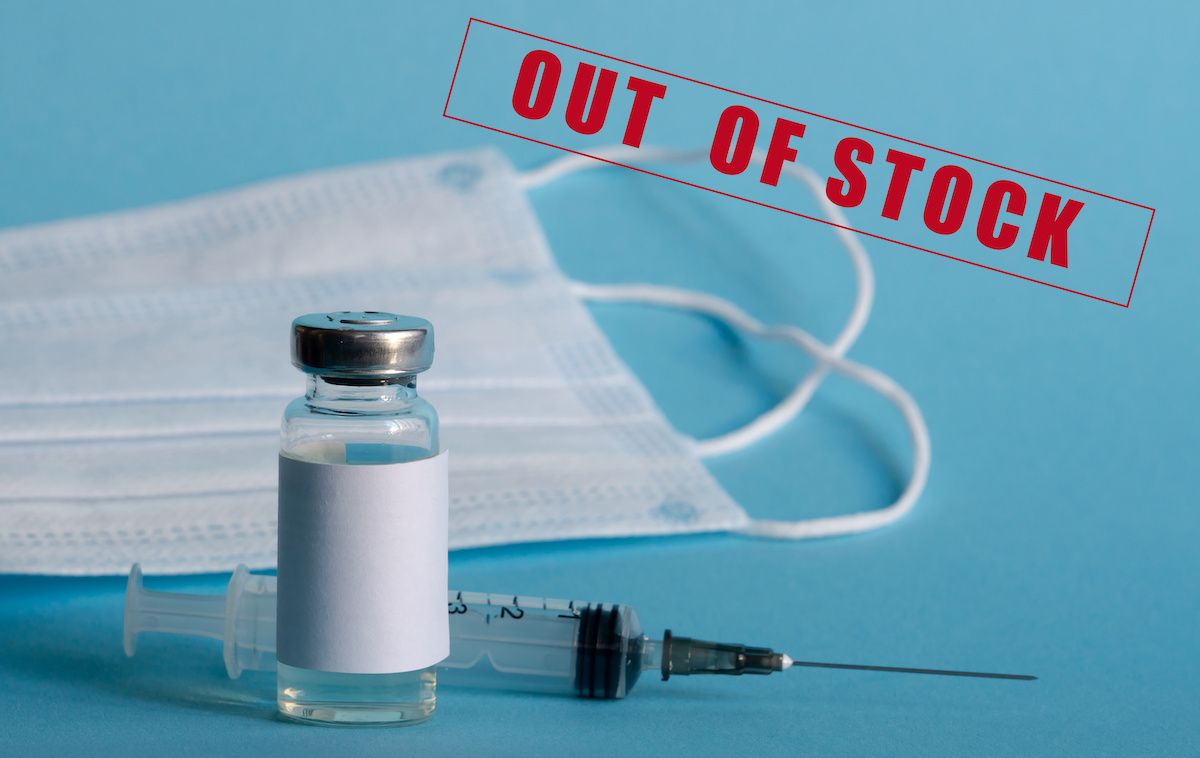- Center on Health Equity and Access
- Clinical
- Health Care Cost
- Health Care Delivery
- Insurance
- Policy
- Technology
- Value-Based Care
IQVIA Report Spotlights Shortages for Pain, Obesity, and Oncology Therapies
A new report from IQVIA provides an overview of current US drug shortages, shedding light on major areas of concern, such as medications to address pain, cardiovascular conditions, obesity and diabetes, and multiple forms of cancer.
Despite an overall decrease from a decade ago, the United States faces drug shortages in 132 molecules as of June 2023 across various therapies, with new shortages outpacing resolutions, according to a new report from IQVIA.
The report assessed the growing number of drug shortages in the United States, examining FDA-reported shortages, product characteristics, and market concentration. Additionally, the report noted complexities, such as COVID-19 disruptions, increased demand for psychiatric medicines and glucagon-like peptide-1 (GLP-1) receptor agonists, and challenges regarding multisource generics, particularly in oncology. The report aimed to facilitate a discussion on past shortages by understanding their causes and proposing solutions to ensure patient access to medicines.
According to IQVIA, drug shortages have concentrated in generic and injectable medicines, including generic chemotherapies as well as anesthetics and GLP-1 inhibitors.

“While the overall number of shortages may be lower than it was more than a decade ago, the causes and impacts have shifted, requiring different strategies to resolve and prevent shortages,” wrote the authors. "All stakeholders involved in the supply and distribution of medicines, from active ingredient manufacturers to pharmacists, play a role in preventing shortages and ensuring patient access to medicines,."
Overview of Shortages
Over the past 5 and a half years, 160 molecules have experienced some degree of drug shortage, of which only 51 have been resolved and 58% have been ongoing for more than 2 years. Eighty-four percent of shortages in the last 6 years have been for generic and injectable drugs. Of the 132 drugs with an active shortage, 120 are generics, and generic shortages most often impact injectables.
Multisource generics were found to have a higher likelihood of shortage than single-source medicines, a flip from 2011. This reflects efforts by regulators and industry leaders to streamline generic approvals over the last decade. Despite this, markets remain highly concentrated with a few suppliers, which influences stakeholders’ ability to effectively address shortages when a leading supplier is affected. The authors recommended that new and existing manufacturers build or expand their manufacturing capacity to account for supply gaps.
Pain medicines and anesthetics as well as cardiovascular, infectious disease, neurology, and oncology therapies experienced the most shortages by treatment space. Shortages in antibiotics create an added concern because they affect multiple aspects of health care delivery and treatment choices, leading to reductions in future escalation opportunities and worsening issues related to antimicrobial resistance.
Shortages are also more likely to impact drugs at lower prices, with 56% of molecules in shortage priced at less than $1.00 per unit. This is because as more lower-priced competitors enter the market, drug prices are driven downward, potentially leading to manufacturers choosing to exit the market or become disincentivized from bringing new entrants.
Oncology Shortages
The COVID-19 pandemic exacerbated shortages in oncology therapies, and although only a small share of the total oncology volume was affected, shortages have persisted for generic and platinum-based chemotherapies. Twelve oncology medicines have had shortages in the last 18 months, impacting between 1% and 100% of the volume over that period. Eleven of these medicines are injectables and 1 is an oral medicine.
“Platinum-based chemotherapy shortages have had an outsized impact on patient care because of their central position in a wide range of regimens across tumors and multiple lines of therapy, often where there are few therapeutic alternatives,” noted the authors.
Additionally, inspection-driven disruptions and market exits have led to oncology shortages, forcing other manufacturers to increase production to fill supply gaps.
Despite multiple suppliers and lower prices, the most significant shortages have been for drugs in highly concentrated markets, making it more difficult for new or existing suppliers to achieve adequate return on investment for increasing manufacturing capacity to address shortages. Highly concentrated markets where 1 or a few companies control a majority of the market limits the resilience of the market when unexpected disruptions arise.
Shortages in Other Therapy Areas
In addition to oncology, the COVID-19 pandemic led to increase demand and manufacturing disruptions in other therapeutic areas, meaning a single solution may not resolve current shortages or prevent future ones. Public health measures to address the pandemic also disrupted the seasonal pattern of bacterial infections, leading to a surge of infection levels in 2022, resulting in shortages for oral pediatric antibacterials. These shortages emerged in late 2021 and have yet to be resolved.
Drug shortages for GLP-1 inhibitors like Ozempic and Wegovy have been caused by significantly increased demand. If the FDA approves these medicines and others like it for more indications, shortages may persist and potentially worsen.

Shortages for anesthetics have been persistent since 2017, particularly for local anesthetics. General anesthetics were also impacted by successive waves of COVID-19 hospitalizations.
Despite increased manufacturing capacity and volume since 2017, there are shortages for attention-deficit/hyperactivity disorder medications. Additionally, shortages for mental health medications generally have occurred; however, they often only impact a limited number of molecules and resolve quickly.
The use of GLP-1 agonists, such as semaglutide (Wegovy and Ozempic), has more than doubled (up 181% for diabetes; up 257% for obesity) since 2020, driven by increases in patients with diabetes and obesity. The increased demand has resulted in ongoing shortages in these novel medicines. Other GLP-1 inhibitors experiencing shortages include dulaglutide (Trulicity) and tirzepatide (Mounjaro).
New data showcasing the benefits of GLP-1 agonists in preventing cardiovascular events and potentially chronic kidney disease suggest that the FDA may expand indications for these drugs, likely leading to an even larger increase in demand in the future.
Reference
IQVIA. Drug shortages in the U.S. 2023. IQVIA website. Published November 2023. Accessed November 20, 2023. https://www.iqvia.com/insights/the-iqvia-institute/reports-and-publications/reports/drug-shortages-in-the-us-2023
Examining Low-Value Cancer Care Trends Amidst the COVID-19 Pandemic
April 25th 2024On this episode of Managed Care Cast, we're talking with the authors of a study published in the April 2024 issue of The American Journal of Managed Care® about their findings on the rates of low-value cancer care services throughout the COVID-19 pandemic.
Listen
Oncology Onward: A Conversation With Penn Medicine's Dr Justin Bekelman
December 19th 2023Justin Bekelman, MD, director of the Penn Center for Cancer Care Innovation, sat with our hosts Emeline Aviki, MD, MBA, and Stephen Schleicher, MD, MBA, for our final episode of 2023 to discuss the importance of collaboration between academic medicine and community oncology and testing innovative cancer care delivery in these settings.
Listen
